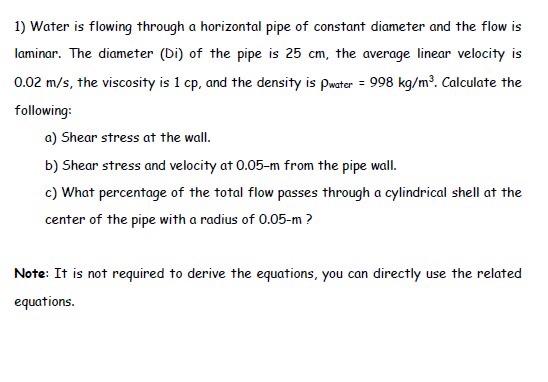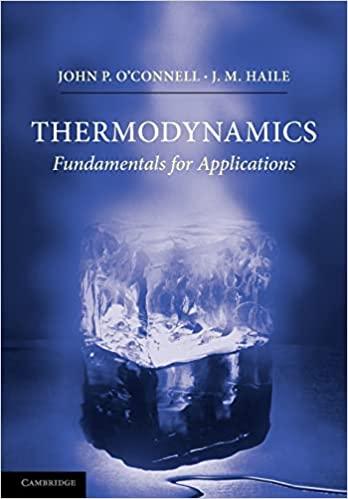Answered step by step
Verified Expert Solution
Question
1 Approved Answer
1) Water is flowing through a horizontal pipe of constant diameter and the flow is laminar. The diameter (Di) of the pipe is 25 cm,
1) Water is flowing through a horizontal pipe of constant diameter and the flow is laminar. The diameter (Di) of the pipe is 25 cm, the average linear velocity is 0.02 m/s, the viscosity is 1 cp, and the density is pwater = 998 kg/m. Calculate the following: a) Shear stress at the wall. b) Shear stress and velocity at 0.05-m from the pipe wall. c) What percentage of the total flow passes through a cylindrical shell at the center of the pipe with a radius of 0.05-m ? Note: It is not required to derive the equations, you can directly use the related equations.

Step by Step Solution
There are 3 Steps involved in it
Step: 1

Get Instant Access to Expert-Tailored Solutions
See step-by-step solutions with expert insights and AI powered tools for academic success
Step: 2

Step: 3

Ace Your Homework with AI
Get the answers you need in no time with our AI-driven, step-by-step assistance
Get Started


